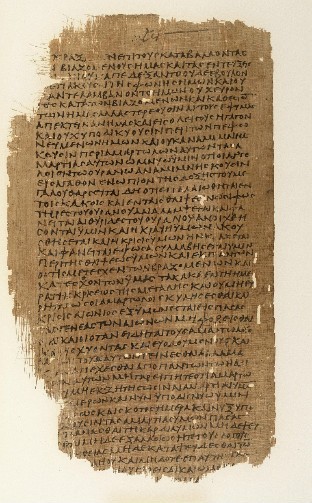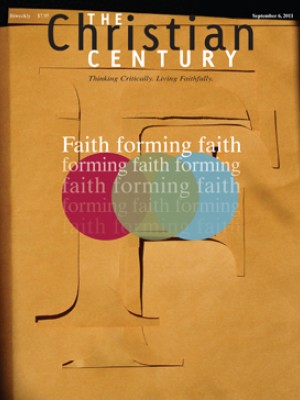Which Bible, whose canon?

When television documentaries explore Christianity, they have little difficulty finding diverse manifestations of faith and practice from around the world. A global survey also reveals a surprising, even startling, diversity when it comes to the content of the Bible.
The New Testament has been well defined for many centuries, and the canonical number of four Gospels dates to the second century. But the shape of the Old Testament is more uncertain. Western Protestants may be surprised to learn how relatively thin their own book is when compared to that of the Catholics, who value texts like Wisdom, Tobit and the two books of Maccabees. This difference is quite recent. During the Reformation, Protestant translators segregated those books into a section labeled Apocrypha (though ordinary believers continued to read and value these books at least into the early 19th century, when they largely dropped out of use).
Read our latest issue or browse back issues.
That timing meant that when Protestant missionaries set out for Africa and Asia, the Apocrypha was not a part of the Bibles they carried with them, and those texts never had much impact on emerging churches. Over time, however, new converts compared notes, and some were startled to find the disparity between Protestant and Catholic Bibles. On occasion those converts became suspicious about the explanations that missionaries offered for the differences. Some asked whether their pastors were keeping whole parts of the Bible secret, presumably for their own selfish ends.
The controversy separating Protestants and Catholics seems minor in view of the traditions of other communities which, though numerically small today, can claim impressively ancient roots. Little known in the West, for instance, is a book called the Apocalypse of Ezra, which is part of canonical scripture for the Syriac Orthodox Church, the lineal heir of the most ancient congregations of Palestine and Syria. And the short Psalm 151 is canonical for the Syriac Orthodox, Armenian, Assyrian and Ethiopian churches and even for the Eastern Orthodox.
The most striking example of a different canon is the one used by the venerable church of Ethiopia or, to give it its proper name, the Ethiopian Orthodox Tewahedo ("One-ness") Church. This community traces its roots to the early fourth century, and today claims an impressive 40 million followers.
So what does an Ethiopian Bible look like? Ethiopians speak of both a Broad and a Narrow Canon, but even the latter, more limited version is much larger than any Western counterpart. It contains in all 81 books, including most of the deuterocanonical works, but also some real surprises: Ethiopians canonize the Book of Enoch and the Book of Jubilees, two texts that have had a persistent influence on the sectarian fringes of Christianity (and Judaism), but which have long since vanished from mainstream use elsewhere.
Enoch is an ancient Jewish work that took final form in the first century BC and survives in complete form only in the Ethiopian language of Ge'ez. To read Enoch is to plunge into an esoteric world of angels and secret revelations, the phantasmagoric universe of "the Watchers, the children of heaven." Elaborating in detail a cryptic tale in Genesis, Enoch tells how the Watchers mated with human women, leaving as issue the giant Nephilim. In this later work, though, the Watchers are precisely named ("Samlazaz, Araklba, Rameel . . .") and their functions described in intimate detail. The whole work sounds like a manual for an ancient magician devising a script to conjure up angels and spirits--which may have been one of its early functions. Yet the book certainly had devotees in the earliest church, and our canonical epistle of Jude (vv. 14–15) quotes Enoch's writings as inspired prophecy.
Just as puzzling is Jubilees, a second-century BC work that Ethiopians call the Book of Division. It grows out of a thought world just as fascinated by angels and apparitions as the writers of Enoch. Jubilees, though, is founded on a rigorous Jewish legalism that makes it a curious candidate for inclusion in a Christian canon.
When we see churches using such (to us) bizarre texts, some might even doubt the Christian credentials of such bodies, or ask whether they might have succumbed to some form of syncretism, incorporating Judaic or Gnostic heresies. But these texts are canonical in one of the deepest-rooted Christian traditions. In other words, this is not an instance of some upstart sect picking the scriptures it happens to have come across in an academic anthology.







